How a Trail Race Review with an Arduua Coach Works
At Arduua, the journey doesn’t end when the race finishes; it’s just the beginning of a new learning cycle.
After every race, athletes submit a detailed race report through the TrainingPeaks app, covering aspects such as intensity, nutrition, and overall experience. This report forms the basis for a comprehensive Race Review, where the coach and athlete delve into the data, discuss performance, and identify areas for improvement.
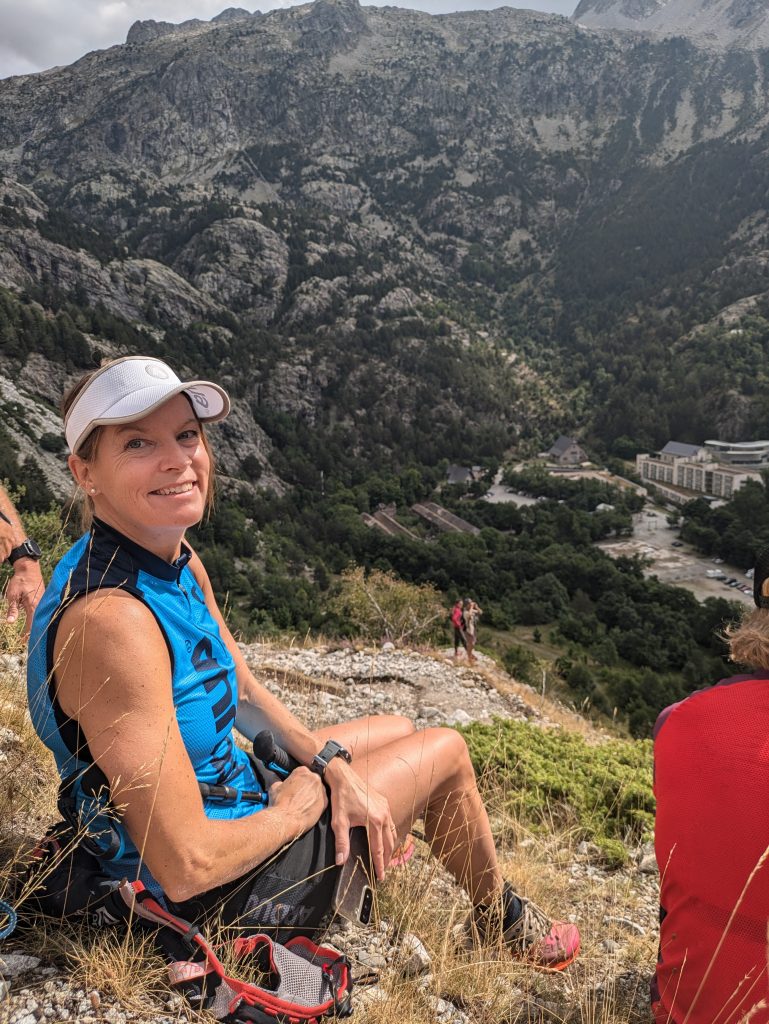
Race Review with Katinka Nyberg: Trail Valle de Tena
Recently, I, Katinka Nyberg, founder of Arduua, completed the challenging Trail Valle de Tena in the Spanish Pyrenees. This demanding race spans 45 km with 3,600 meters of elevation gain, traversing rugged alpine terrain and reaching the summit of Pico Garmo Negro, which stands over 3,000 meters high. After the race, my coach, David Garcia, and I conducted an extended Race Review via video meeting to analyze my performance in depth.
“It was a fantastic race experience,” I shared. “I enjoyed every moment in the beautiful Tena Valley. It’s a privilege to spend 12 hours in such stunning mountains, even though I ended up with severe muscle soreness. My quads were burning for days!”
Step-by-Step: The Race Review Process
Pre-Race Preparation: Setting the Strategy
Before the race, David and I discussed a detailed race strategy, focusing on the following key areas:
- Intensity Levels:
We planned a conservative start with controlled pacing, targeting Zone 2 for the uphills and keeping intensity steady on the flats and downhills. - Nutrition Plan:
The strategy aimed for a steady intake of carbohydrates, targeting 60 grams per hour. David recommended a mix of isotonic sports drinks, gels, and solid foods like sandwiches and fruit to keep my energy levels stable. - Equipment and Gear:
I carefully selected my equipment to suit the rocky terrain and high altitude.
Post-Race Report in TrainingPeaks: Breaking Down the Data
After crossing the finish line in 12 hours and 21 minutes—beating my previous time by nearly 1 hour and 40 munutes—I uploaded my race data and feedback into TrainingPeaks. Here’s my experience, along with my coach’s insights:
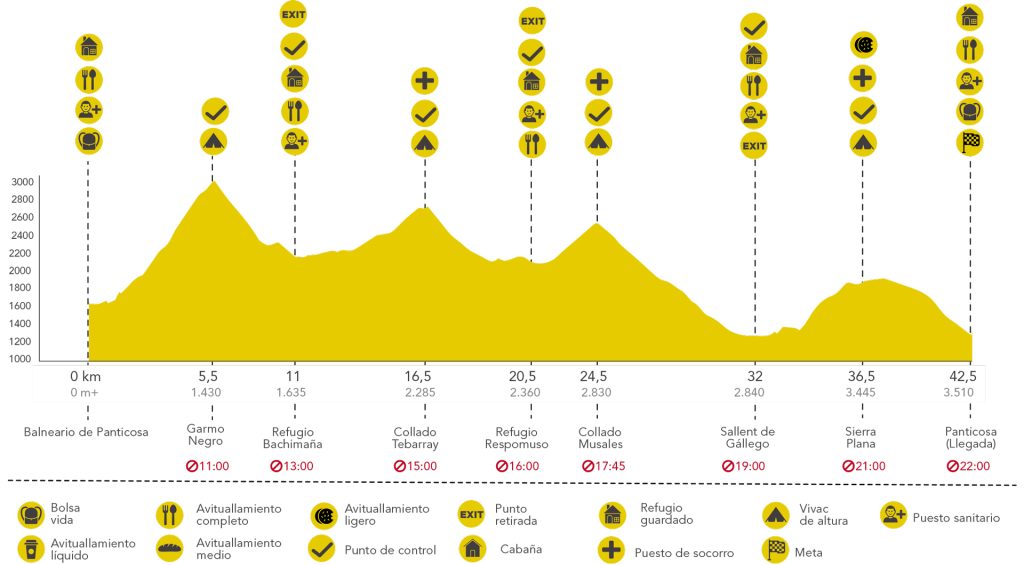
Part 1 – Start: Balneario de Panticosa to Refugio de Bachimaña via Pico Garmo Negro
I started the race at Balneario de Panticosa, feeling excited but cautious, knowing the first major climb to Pico Garmo Negro would be challenging. Reaching 3,051 meters of altitude at 5.5 km was a true test of endurance right from the start. I kept a steady pace in Zone 2 and reached the peak in 2 hours and 23 minutes, although I got stuck in a queue at the beginning of the race, which slowed me down. The descent to Refugio de Bachimaña at 11 km was tough due to the technical terrain, and I took a fall, which further impacted my pace.
Nutrition:
- Uphill: 1 isotonic sports drink (60g CH), 2 gels (60g CH)
- Downhill: 1 isotonic sports drink (60g CH)
- Total: 180g of carbohydrates
Coach’s Feedback:
David noticed that I started a bit slowly and got stuck in a queue at the beginning of the race, which often happens on narrow trails. He suggested that starting slightly faster could have secured a better position. He was pleased with my consistent pacing in Zone 2 during the climb but pointed out that I lost some positions on the technical downhill, indicating room for improvement in my downhill skills. He recommended adding one more gel in the downhill section to maintain a steadier energy level.
Part 2 – Bachimaña to Refugio de Respomuso via Collado Tebarray
From Bachimaña, I began the steady climb to Collado Tebarray at 2,765 meters. It was a challenging ascent, but I focused on maintaining a manageable pace. I made sure to take strategic nutrition breaks, and I felt confident during the descent to Refugio de Respomuso at 20.5 km. My energy levels remained stable, and I was able to enjoy the beautiful surroundings.
Nutrition:
- At Bachimaña: 2 ham and cheese sandwiches (~600 kcal) (eating while walking, then having a 1-hour nutrition break with just water to rest my stomach)
- Uphill: 2 gels (60g CH)
- Downhill: Just water
Coach’s Feedback:
David noted that my carbohydrate intake was lower than ideal (around 40g CH per hour) but appropriate considering the long downhill section. He suggested adding something solid like fruit or a banana to reach the ideal 60g CH per hour. He emphasized balancing solid and liquid carbohydrates to prevent gastrointestinal issues.
Part 3 – Refugio de Respomuso to Sallent de Gállego via Collado de Musales
After refueling at Respomuso, I tackled the climb to Collado de Musales (2,569 meters) at 24.5 km. The climb was tough, but I managed to keep a steady pace. The long descent to Sallent de Gállego at 32 km went very well, and I enjoyed the race while maintaining consistent pacing.
Nutrition:
- At Respomuso: 2 ham and cheese sandwiches (~600 kcal) (eating while walking, then having a 1-hour nutrition break with just water to rest my stomach)
- Uphill: Water + 2 gels (60g CH)
- Downhill: 1 isotonic sports drink (60g CH)
Coach’s Feedback:
David praised my steady pacing and nutrition intake during this segment.
Part 4 – Sallent de Gállego to Mirador de Sierra Plana
The final climb from Sallent de Gállego to Mirador de Sierra Plana was one of the toughest parts of the race. My energy reserves were depleting, and my quads were burning from the relentless climbs. I focused on staying hydrated and kept pushing, but I could feel myself slowing down.
Nutrition:
- Sallent de Gállego: (took nothing)
- Uphill: 1 isotonic sports drink (60g CH), 2 gels (60g CH)
Coach’s Feedback:
David recommended that I take some fruit or similar at the refreshment point and use a caffeine pill at the start of this climb to reduce fatigue.
Part 5 – Mirador de Sierra Plana to Panticosa (Finish Line)
The final stretch was a descent from Mirador de Sierra Plana to the finish line in Panticosa at 45 km. Despite the fatigue, I pushed hard, and the support from my Arduua teammates cheering me on made for an emotional and unforgettable finish.
Nutrition:
- Sierra Plana: 0.5 liters of Coke
- Downhill: Nothing
Coach’s Feedback:
David suggested that a final gel would have provided extra energy for the last stretch, helping to avoid complete glycogen depletion and aiding in recovery. Despite the fatigue, he was pleased with my determination and strong finish.
Race Summary
I’m super happy with my race experience and overall performance. I enjoyed every moment of it (except the last uphill 😊). Entering the finish line with a big smile on my face and seeing my teammates cheering for me was an unforgettable experience.
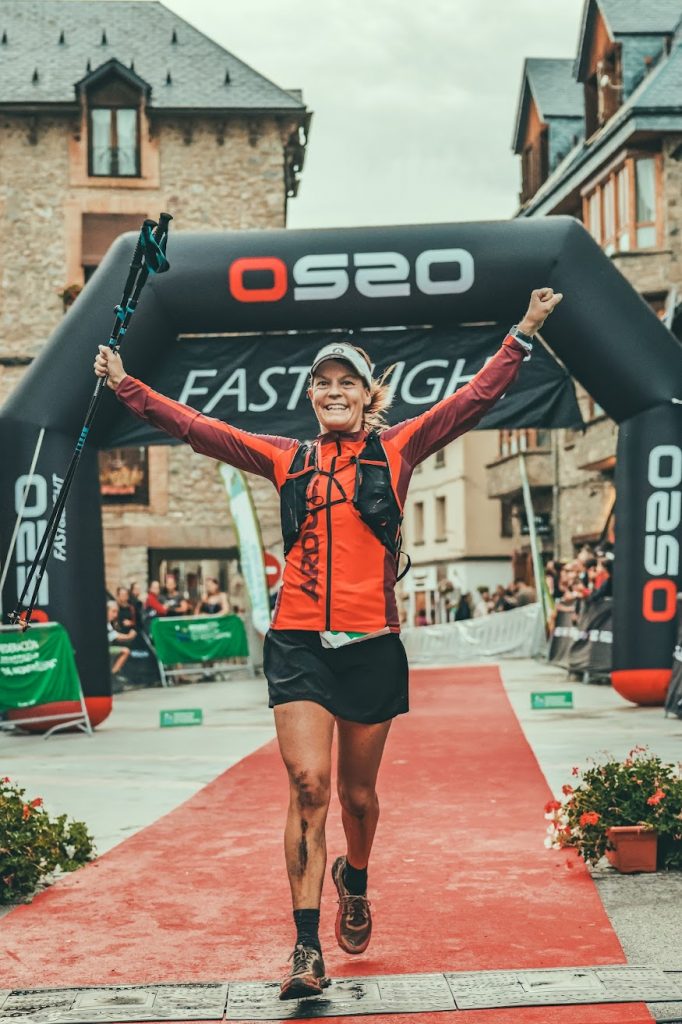
Overall Results
- Time: 12:21
- Total: 276°
- Females: 35°
- Females, F50 (my category): 3°
- Distance: 44.8 km
- Elevation Gain: 2,621 m
- Elevation Loss: 4,081 m
Nutrition Summary:
- Gels: 8 × 30g = 240g
- Sports Drinks: 4 × 60g = 240g
- Sandwiches: 4 × 300 kcal = 1,200 kcal
- Total Calories: 1,800 kcal
Coach’s Overall Feedback:
Overall, David felt I did a good race and managed to keep a steady level of intensity throughout in Zone 2. He emphasized the importance of maintaining carbohydrate intake more regularly on a strict schedule. While the overall nutrition intake was good, adding two more gels and some fruit could have improved performance even more. He also suggested having a strategy for caffeine intake, alternating between caffeine and non-caffeine gels to reduce the perception of fatigue and improve performance in the later stages.
Extended Race Review: Video Meeting
David and I connected for a detailed video review, meticulously analyzing every aspect of the race. We used TrainingPeaks to study various performance metrics, including vertical speed, heart rate, and nutrition intake. This comprehensive discussion was crucial for identifying areas of improvement and setting new goals for future races.
David emphasized the importance of maintaining a steady carbohydrate intake between refreshment points to ensure consistent energy levels throughout the race. He also recommended practicing technical descents to enhance efficiency and reduce energy expenditure on challenging terrains. The goal is not only to maintain physical endurance but also to optimize energy conservation during demanding sections of the race.
“We delved into my heart rate data, which showed a relatively steady performance throughout the race. This was reassuring as it indicated I was able to maintain controlled intensity despite the challenging terrain and length of the race. We also discussed my vertical speed and how I managed my pacing during the climbs and descents. David provided insights into how to fine-tune these aspects for even better performance in future races.”
Heart Rate Analysis
In the graph below, you can observe my heart rate (represented by the red line), which remained relatively steady throughout the race, demonstrating controlled intensity. Considering I am an amateur runner, maintaining such a consistent heart rate is commendable. For elite athletes, the objective is to sustain an even more stable and higher heart rate, reflecting optimal energy management and endurance capacity.
This in-depth review allowed me to gain valuable insights into my performance, particularly in managing intensity and energy expenditure across different segments of the race. Such reviews are essential for fine-tuning strategies and improving performance in future competitions.
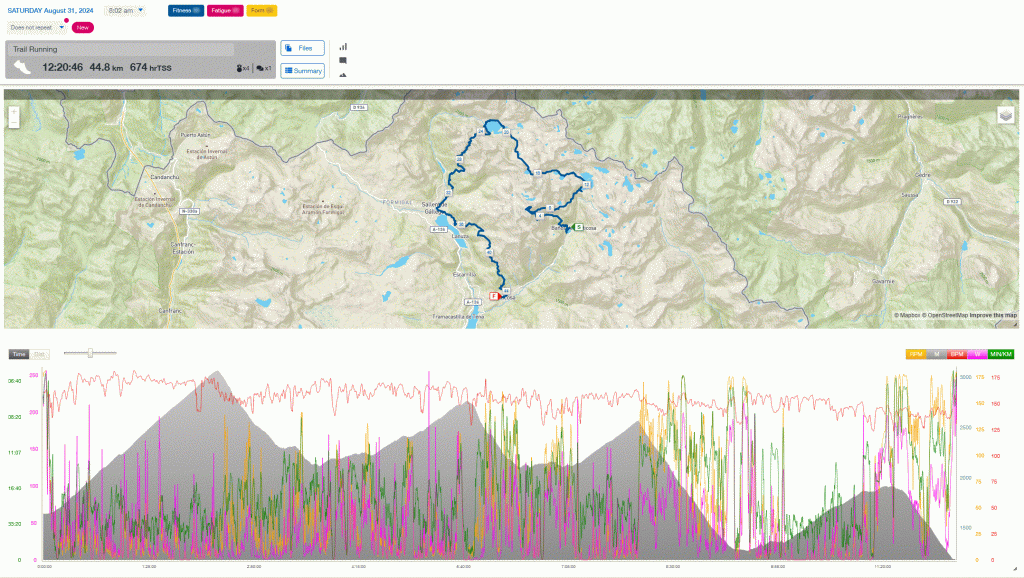
Key Learnings and Next Steps
The Race Review is more than just a performance analysis; it’s an opportunity to grow as an athlete. Here are some of the insights I gained from this race:
- Improving Technical Skills:
Focusing on agility and technical descents will be crucial for future races with challenging terrain. Practicing more technical downhills will help me maintain my position and conserve energy during these sections. - Optimizing Nutrition:
Aiming for 60g of carbohydrates per hour consistently, including solid foods, will help maintain energy levels. Monitoring nutrition between refreshment points, rather than between summits, provides better energy balance. - Caffeine Use:
I also need to ensure a more structured approach to caffeine intake, using it strategically to reduce fatigue and enhance performance. Using it every 2–2.5 hours can enhance endurance and mental clarity. I’ll plan to alternate between caffeine and non-caffeine gels to maximize its benefits. - Starting Strong:
Pushing slightly harder at the start, while maintaining control, can help secure a better position and save time on narrow trails. I’ll work on balancing early effort to avoid fatigue while positioning myself better at the start of the race.
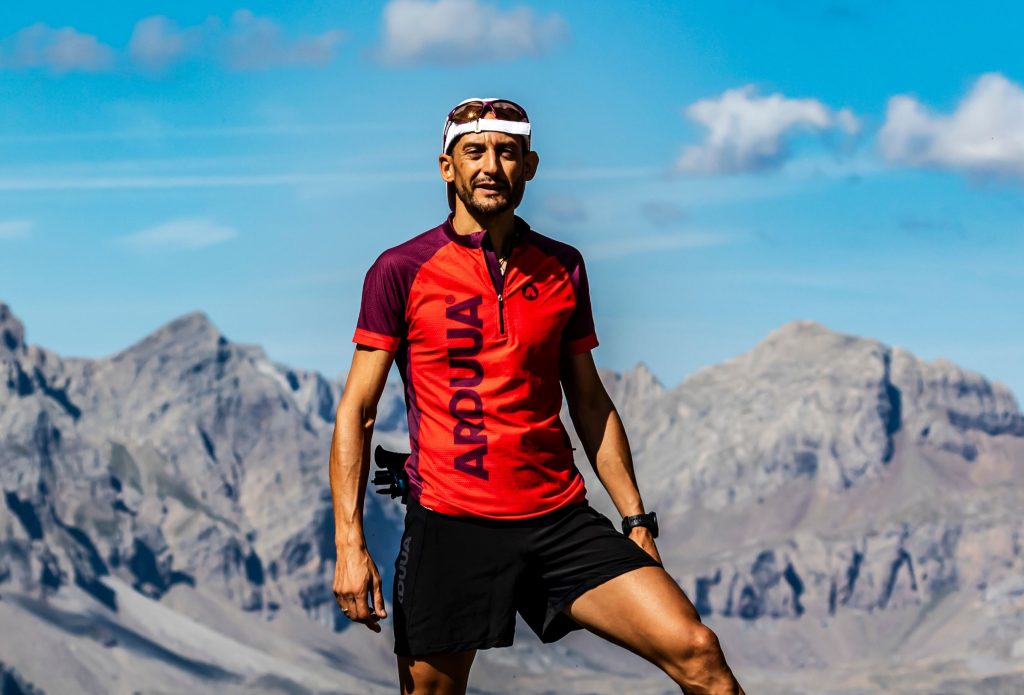
How Arduua Can Help You Achieve Your Goals
My Race Review with David showcases how personalized coaching can make a difference in achieving your trail running goals. Whether you’re preparing for a local trail race or aiming for something as challenging as the Trail Valle de Tena, Arduua’s coaches provide tailored training plans, pre-race strategies, and post-race reviews to ensure continuous improvement.
Ready to take your trail running to the next level? Join our global community of trail runners and benefit from our expert coaching programs!
👉 Learn more about Arduua Online Coaching
Blog by Katinka Nyberg, Arduua Founder


